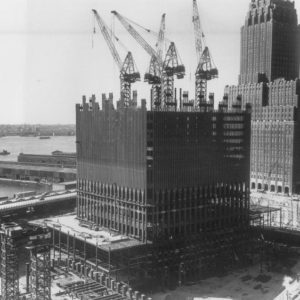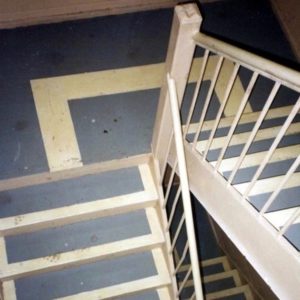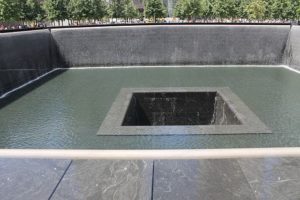September 11, 2001, will always be remembered as the day that shook the world. New York’s World Trade Centre Twin Towers fell as a direct result of horrific terrorist attacks. Two 767 Boeing planes were flown directly into the upper part of each tower, causing structural damage and igniting jet-fuelled fires that ended with both buildings collapsing nearly an hour after impact. It remains one of the world’s greatest tragedies with a devastating toll of 2,997 lives lost during the nationwide attacks. Given the towers were feats of engineering for their time, fierce debates raged between building authorities and the construction industry on exactly why, and how, the towers failed. It was agreed that the only body truly responsible for the tragedy was the organisation behind the attacks, but an investigation was critical to determine the technical failings of the buildings and evacuation problems that caused more lives lost.
What role did passive fire protection play, and could updated fire protection have stopped the collapse altogether? While the structural integrity of the towers was compromised from both the impact of the planes and the fires that resulted, passive fire treatment did prolong the amount of time the buildings could withstand the blaze. This gave more people more time to evacuate, with nearly 15,000 people successfully escaping from the towers below the points of impact. But, the existing passive fire materials and fire resistance levels within the building were found to be inadequate and ultimately, a major factor in the twin towers’ collapse.
Was the passive fire protection up to code?
The towers were up to building code standards when The World Centre was completed in 1973. As noted by FEMA, the Twin Towers were the first structures outside of the military and nuclear industries whose design considered the impact of a jet airliner, the Boeing 707.1 While they were designed to withstand the impact of low-flying planes, they were not specifically designed to withstand planes of a larger size, as was the case with the Boeing 767s used in the attack.
After the planes hit, damage to active fire suppression systems and passive systems such as fireproofing, was severe. As the planes severed perimeter columns and damaged interior columns, they also shook fireproofing from the buildings’ steel structures.
It has been suggested that the leaked jet fuel burned at an extreme temperature, or that the aluminium of the aircraft ignited, causing heat to reach over 1370°C and the steel to melt. This has been disproven. While jet fuel was the main cause of the fire spreading, it has been confirmed that this would have burned off in minutes. Also, the maximum flame temperature increase for burning jet fuel in air is about 1,000°C. And, while it is possible to ignite aluminium under special conditions, the flame would have been white-hot, like a giant sparkler. There was no evidence of such aluminium ignition, which would have been visible even through the dense soot.2 A professor at the University of Maryland’s Fire Protection Engineering Department, James G Quintiere, analysed the fireproofing in the two towers. He found that neither tower had fireproofing thick enough to withstand the intensity of the fire.

One of the towers under construction in the early 1970s.
What caused the actual collapse?
The Twin Towers withstood initial impact for 102 minutes and 56 minutes respectively which is in itself notable, especially given each tower was struck by a Boeing 767 Aircraft, each with weights in excess of 124,000 kilograms travelling at speeds between 750 and 970 kilometres an hour. The fact the structures remained intact for these durations is thought to have saved hundreds if not thousands of lives during the evacuation process.
But, the steel column fireproofing was compromised from the initial impact and the leakage of the jet fuel caused the fire to spread rapidly across multiple floors. Because the fireproofing had been damaged, containment was minimised. According to the official FEMA report, the fire caused thermal expansion of the concrete floors in a horizontal and outwards direction, pushing against the rigid steel columns which then deflected to an extent but resisted further movement. With the steel columns displaced, the structure was unstable. The buildings then collapsed under the freefalling weight of the upper floors.
The egg-crate construction style of the building made for a redundant structure, so if one or two columns were lost, the loads would shift into adjacent columns and the building would remain standing. It has been suggested that if it was not for the intensity of the fire following the collisions, the towers could have remained stable.3
The biggest design flaw of the World Trade Center
It has been lamented by experts and survivors alike that more lives might have been saved if both structures had been built with more than just three staircases. The stairwells were a critical factor in the death toll. There were too few, too close together and with walls too weak to withstand the fire. When the World Trade Centre opened in 1973, its Twin Towers were each 110 storeys high. While they were under construction, New York City’s building codes for high rises changed to allow fewer stairwells in the towers, halving the number required from six to three. The stairwells became a bottleneck as people trying to escape squeezed past firefighters running up towards the point of impact. Hundreds of Americans on 9/11 who survived the initial impacts from the two hijacked aircraft perished for want of a safe exit.4
In the aftermath of the disaster, a series of investigations were launched with the goal of improving building performance and safety. The US approved no less than 23 building and fire code modifications in 2008, following investigations into the World Trade Centre disaster.
This included measures to improve fire resistance in building materials and reinforce structures against collapse including adding blast-resistant walls to elevator and stairwell shafts. Karl Fippinger from the International Code Council (ICC), a non-profit that develops building codes in the US said that “We can’t design for all scenarios but we can design buildings in a way that buys time.”5 Nearly 15,000 occupants did escape the towers via stairwell after the initial impact, but many more could have been saved.

The investigation proved the lack of stairwells and poor design increased fatalities.
Could modern passive fire protection have stopped the collapse?
As late as 2000, officials were still redoing the fireproofing, noting in one property assessment that some areas could survive only one hour in a fire. S. Shyam Sunder, lead investigator from the National Institute of Standards and Technology (NIST) explained that newly developed fireproofing could perhaps have sustained the structure for longer. “Even with the aeroplane impact and jet-fuel-ignited multi-floor fires – which are not normal building fires – the buildings would likely not have collapsed had it not been for the fireproofing that had been dislodged,” he said. He was mindful that it is impractical to design fireproofing that can withstand the impact of an aeroplane, also adding that “the failure of the fireproofing material was not a result of improper installation when the towers were constructed more than 30 years ago or lax maintenance since then.”6
Sunder also found that reinforced surrounding walls “might have provided greater opportunities for escape”. What is also notable was the lack of protectant on ducts throughout the building. Fire protective spray on ducts is now a critical element of high-rise passive fire design.
It continues to devastate that it takes major disaster to mitigate change. The World Trade Center attack was a rare and disturbing event with unimaginable circumstances, but it reinforced the cruciality of effective passive fire protection to save lives. As Karl Fippinger from the ICC explained just last year, “Twenty years later, building codes do reflect the sacrifice of the people who went before us, who perished on 9/11. We owe them a debt of gratitude for their sacrifice.”

The memorial pool at 1 World Trade Center, New York.
References
2.https://www.tms.org/pubs/journals/jom/0112/eagar/eagar-0112.html
3.https://www.theguardian.com/world/2003/may/08/usa.september11
6. https://www.newscientist.com/article/dn7236-fireproofing-key-to-twin-towers-collapse/

